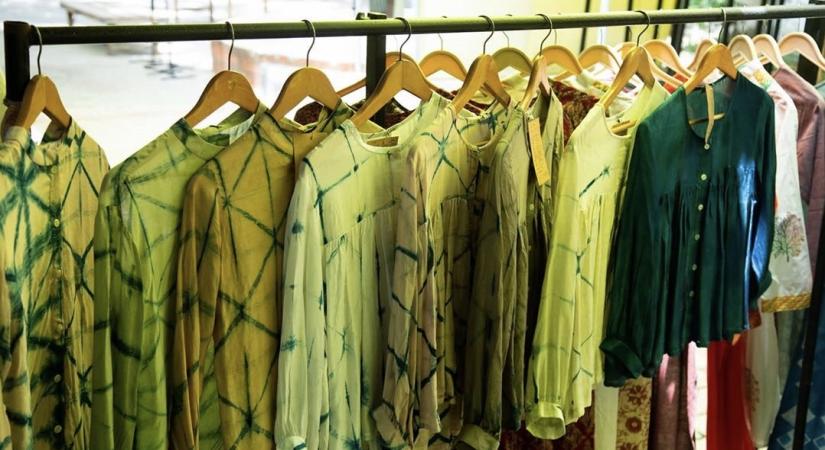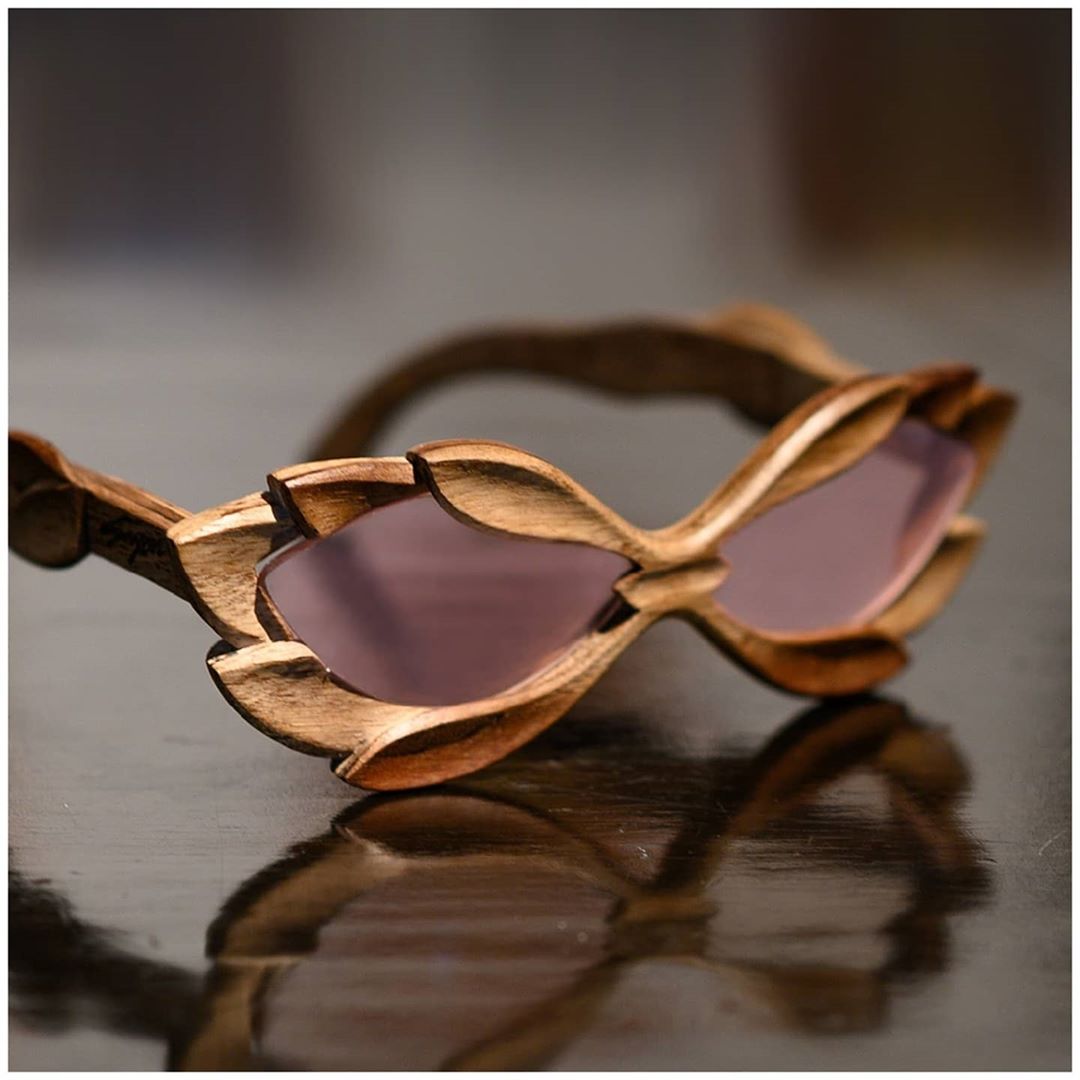Cover Story
Look beyond fashion labels and hashtags to be #Vocal4Handmade

The best and simplest way consumers you show you support for handloom is by voting with your pocket. Like every industry, fashion is all about supply and demand
BySujata Assomull
August 16, 2020 (IANSlife) Ever since the outbreak of Covid-19, there is a heightened awareness within the media about being “Vocal for Local”, especially when it comes to fashion. Last weekend saw fashion bodies such as the Fashion Design Council of India and Lakme Fashion Week asking the fashion fraternity to share pictures with the hashtag #Vocal4Handmade.
When it comes to textiles, no country can rival the heritage and beauty of Indian craftsmanship. 60 million people are employed by the apparel and textile industry (it is the country’s second biggest employer), the Covid-19 epidemic has upturned the lives of many of these highly skilled artisans. Between the current migrant exodus and the forced closure of factories the future of this precious sector is at risk. Within this set of skilled artisans are handloom kaarigars, of which there are 44 lakh are registered.

While 95 per cent of the world's handloom fabric comes from India, it is worrying to know how little real respect is given to these workers in their home country. Just the day before Handloom Day craft activist Laila Tyabji announced that the All Indian Handicrafts Board had been abolished. While the 70 year old institution was no longer the effective change-maker it once was, it was still a place where workers could go to when in need. What it has been replaced with and what the reasons for shutting it down were are is still unclear.
What followed was a series of articles talking about the handloom sector, it's history, the politics and economic reasons for the need to be vocal about #handmadeinindia. Important debates but perhaps full of rhetoric for the average consumer. The best and simplest way consumers can show their support is by voting with your pocket. Like every industry, fashion is all about supply and demand.
THINK LIKE YOUR GRANDMOTHER
Neeti Mehra, the founder of Beej Living, a journal on slow living and a sustainability consultant (her Instagram handle @beejliving is full of tips on how to lead a slow and responsible life) says, “We need to reconnect with our heritage of fabrics and silhouettes which look good, feel good and are good for our skin.” Her tip is to buy garments directly from on-line organisations who you know are working in the handloom sector such as Dastkar (Tyabji is one its founders) or SaveTheLoom.Org.

The added bonus when buying from these organisations is it also shifts your mindset to start shopping the way our grandmothers did. They knew the basis of clothing was cloth and it took precedence before the cut, colour or styling. Often buying unstitched materials, they valued anything handmade over machine made. Our grandmothers always had a great tailor (or masterji) on hand to both make and remake clothes.
Adds Mehra, “If you're not as hands on, there are many brands which are conscious and ethical.” Mostly importantly, when our grandmother’s shopped they bought from labels and designers they knew--- who they could trust and whose philosophies were in tune with their own. Of course fashion has changed now and is a huge organised industry, but luckily we now have the internet and can do our own research. We just need to remember to be guided by the same measured principles as our grandmothers.
DO YOUR HOMEWORK
Informed shopping must replace impulse buying. Ekta Rajani, a leading creative design consultant, stylist and a slow fashion advocate believes that you should begin where you can. (I call her my encyclopedia on slow fashion, as her social media handle, @eksters, highlights the work of labels that follow the principles of mindful fashion). “If the idea of being responsible as a shopper calls out to you- read up, have conversations, trial and error your way through it and also try having a little fun. Without that, shopping may feel chore-like. There are several touch points one can read up on: material -- natural fibers, low resource fibers; dyes natural or synthetic; is the product made locally or made abroad; does it use upcycled or virgin materials and also is the product made in small batches or mass produced.”

The Delhi based brand which creates wooden frame eyewear
It really is about having a savior fair, as Mehra says, “You can't fall in love with what you aren't familiar with. Read about the modern fashion industry's inherent problems, visit more exhibitions where you can interact directly with artisans, touch, feel and understand fabrics, travel to India's leading weaving and textile centers (post Covid), experiment with textures and drapes.”
Of course we may still make a mistake-- as Rajani points out, “Just as an example, we are going crazy with the handloom hashtag, which is great for our weavers. But many handlooms are made with synthetic dyes. Which isn't great for the environment. So sometimes, responsibility for one part (human livelihood) may be at odds with the other (the planet).” It is a bit of a hit and miss at first, but once you start learning, you automatically develop an instinct on how to make good choices. And wearing clothes that you know the stories behind, gives your sense of dressing a real feel of style and substance."
BE AN AMBASSADOR OF INDIAN FASHION
This weekend we are celebrating India’s 74th day of Independence; discover fashion influencers and bloggers who have shared pictures of their brightest and best “Make in India” outfits. India is one of the few countries left where our national costumes are part of our daily dress code, it is also a country with a flourishing contemporary fashion industry. Yet for some reason we still do not give homegrown labels the credit they deserve.
As Mehra says, “India has the softest of mals and silks, the beauty of our dyeing and print techniques such as dabu, kalamkari, ajrakh, batik, bandhani are incomparable, and the versatility of our drapes are unparalleled globally such as the sari. Our biggest fashion faux pas is not experimenting with our own sense of unique style and our resplendent heritage in our daily lives”.
As a rule I wear something Indian everyday—it could be a necklace or pair of beautiful handmade chappals (sandals). It ensures I stay more informed about Indian brands and also understand the wide repertoire of what is out there. It is not about #handmadeinIndia being a hashtag, but a mantra for the way we dress.

The writer Sujata Assomull is an IANSlife columnist. Assomull is the author “100 Iconic Bollywood Costumes” and was the Founding Editor In Chief of Harper's Bazaar, India.
(This article is a website exclusive and cannot be reproduced without the permission of IANSlife)
IANSlife Features can be contacted at ianslife@ians.in


